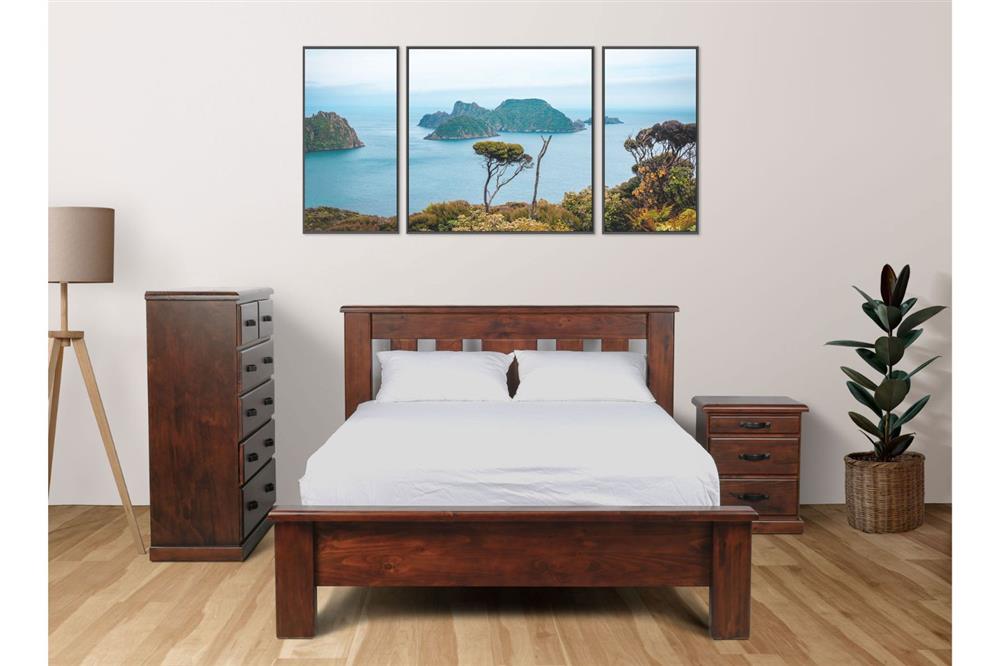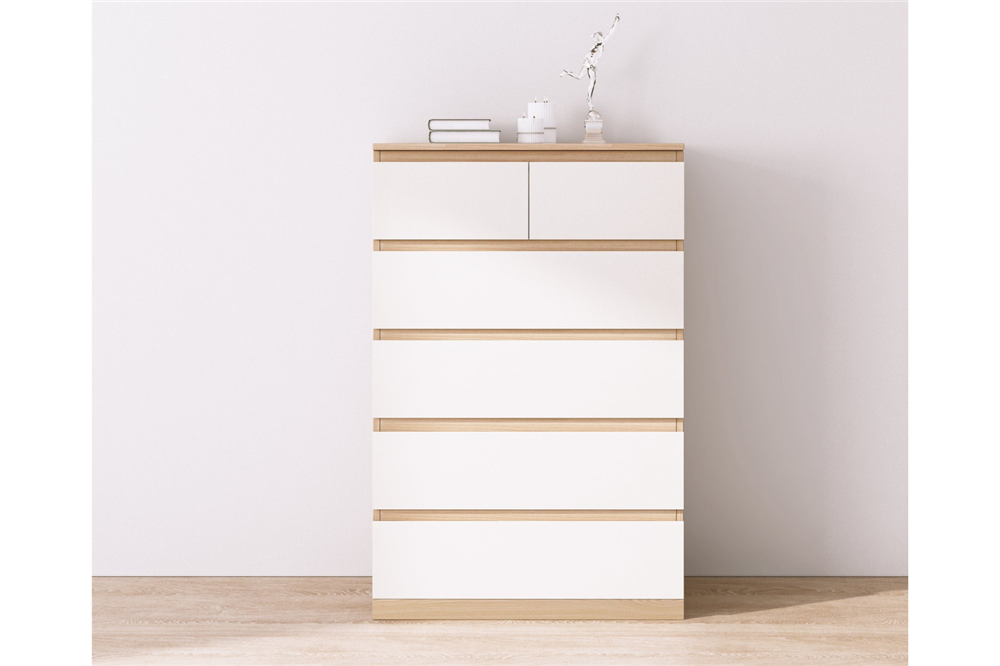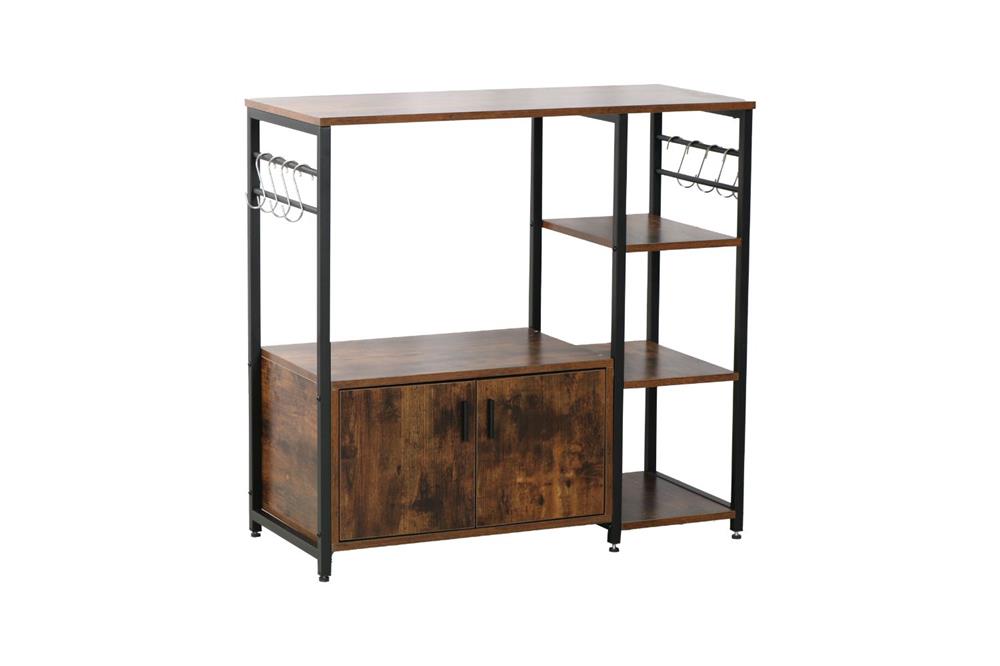
When it comes to choosing furniture, there are a variety of materials to choose from. Three of the most popular materials are solid wood, MDF (medium-density fiberboard), and particle board. Each of these materials has its unique strength, so it's important to understand the differences before making a decision.
Solid Wood Furniture

(DROVER Bedroom Range - Solid Pine Wood)
Solid wood furniture is made entirely from solid natural wood, rather than from composite materials like particleboard or MDF that have been glued together. It’s often considered the gold standard in furniture materials. The type of wood known for used in furniture is oak, pine, teak, acacia, and many other.
Solid wood is highly valued for its natural beauty, durability, and strength. Each piece of furniture has a unique grain pattern and colour that can vary from piece to piece due to its nature. The natural variations in the wood give a character and beauty that cannot be replicated by synthetic materials.
It's also known for its durability and longevity. Because it's made from one solid piece of wood, it's less likely to break, warp, or crack than furniture made from composite materials. With proper care and maintenance, it can last for generations, making it a worthwhile investment for homeowners.
However, solid wood furniture is generally more expensive than furniture made from composite materials. The cost of the wood, the labour involved in crafting the furniture, and the durability and beauty of the finished product all contribute to the higher price tag of this product.
MDF Furniture

MDF stands for “Medium-Density Fiberboard”, which is a type of engineered wood product made from wood fibers that are combined with a synthetic resin adhesive and then pressed into boards under high pressure and temperature.
MDF is commonly used as a material for furniture because it is affordable, easy to work with, and has a uniform texture and density, which makes it suitable for a wide range of finishes and applications. MDF is also a more environmentally friendly alternative to solid wood because it can be made from wood waste and does not require the harvesting of new trees.
MDF can be used for a variety of furniture pieces, including cabinets, shelves, desks, and even decorative accents such as molding and trim. It is also a popular choice for painted furniture because it has a smooth surface that can be easily sanded and painted to achieve a uniform finish. However, MDF is not as strong or durable as solid wood and may be prone to cracking or chipping if subjected to heavy wear and tear.
Particle Board Furniture

Particle board (PB) furniture is made from a composite material known as particleboard or chipboard. It can be made from wood particles, such as sawdust, wood chips, or shavings, that are mixed with a synthetic resin or binder and then formed into panels under heat and pressure.
Particle board furniture is often less expensive than solid wood furniture and is popular for its affordability. It is also a versatile material that can be used to create a wide range of furniture styles and designs. Additionally, because particle board is made from recycled wood waste and other materials, it is considered to be an environmentally friendly option.
However, it is not as durable as solid wood furniture and may be more prone to breaking or chipping under heavy use. Additionally, it's more susceptible to water damage than solid wood and may warp or swell if exposed to moisture for an extended period of time.
While particle board can be covered with veneers, laminates, or other decorative finishes to improve its appearance, it doesn't have the natural beauty and character of solid wood furniture.
You might think “It seems like MDF and Particle Board material are quite similar, are there any differences?” The answer to that is yes, there are differences.
Particle board and MDF (medium-density fiberboard) are both engineered wood products made from wood fibres that are compressed and glued together. While they have some similarities, there are also some key differences between the two materials, including:
- Density and Strength: MDF is denser and stronger than particle board. It is made by applying high pressure and temperature to wood fibres and a resin binder, resulting in a very dense and uniform material.
- Appearance: MDF has a smoother and more uniform surface than particle board. Because of its fine texture and density, MDF is often used for furniture that requires a smooth and consistent finish, such as painted surfaces. Particle board, on the other hand, has a rougher texture and is typically covered with veneers or laminates.
- Water Resistance: MDF is more resistant to water than particle board. Because MDF is denser and more uniform, it is less susceptible to warping or swelling when exposed to moisture. Particle board, on the other hand, is more porous and can easily absorb water, leading to warping or expansion.
- Price: Particle board is generally less expensive than MDF. Because particle board is less dense and less strong than MDF, it is less expensive to produce, which makes it a more affordable option for furniture manufacturers.
In conclusion, solid wood, MDF, and particle board are all popular materials for furniture, each with its own unique strength. When choosing furniture, it's important to consider factors such as durability, appearance, cost, and environmental impact to determine which material is the best choice for your needs and preferences. Explore our wide range of options from Bedroom, Living, Dining, and Office.



.jpeg)